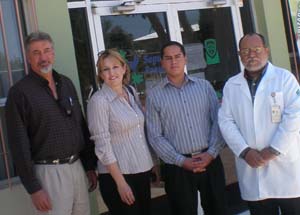Tuberculosis
Tuberculosis (TB) is one of the infectious diseases of concern to US public health officials working along the US-Mexico border and with other migrant underserved populations. TB case rates tend to be higher on the border and among migrating populations. TB is also a challenging disease to treat because of the long treatment period, which is complicated when an individual is migrating during treatment.
In the United States, tuberculosis rates continue to show marked racial and ethnic disparities. Given the parallel disparities in income related to race and ethnicity, these factors are difficult to separate in epidemiological descriptions. Between 2019 and 2021, 71% of TB cases occurred among non-US-born persons.
People with certain comorbidities are at greater risk of TB. Those with diabetes and/or HIV are particularly at risk. People being treated for autoimmune disorders, and people taking immunosuppressants like those with organ transplants or those in the midst of chemotherapy are also at greater risk of TB infection.
A majority of TB cases are among the unemployed or precariously employed, but some workers are at higher risk. About 3.7% of US TB cases between 2010 and 2016 were among health care personnel. Migrant farmworkers are also at increased risk. In addition to occupational risks – many migrant farmworkers are provided substandard poorly ventilated bunkhouses and other on-farm housing that may promote the spread of TB – migrant farmworkers also have limited access to TB testing and care, due to immigration status, lack of health insurance, transportation, linguistic and cultural barriers, inflexible work situations, and more.
Migration in particular is a significant barrier to TB treatment, as the regimen is lengthy and few migrants can independently navigate multiple health systems at each location to prevent treatment disruption. MCN's Health Network has a long history of assisting health centers, health departments, and other public health institutions in coordinating TB care for migrants, including virtual Directly Observed Therapy (DOT). As of 2022, Health Network had assisted over 12,000 migrating patients for many health needs including TB, traveling across the United States and to 114 countries.
However, efforts to control and end TB in the United States cannot focus exclusively on cases within our borders or on surveillance alone. In this age of immigration, emigration, the global market and international travel, no country stands alone in terms of infectious disease. TB, like other communicable diseases, knows no borders. In order to eliminate TB in the United States, the US must take part in international control efforts.
For more information and resources to diagnose, manage, and treat tuberculosis, view our Toolbox.

